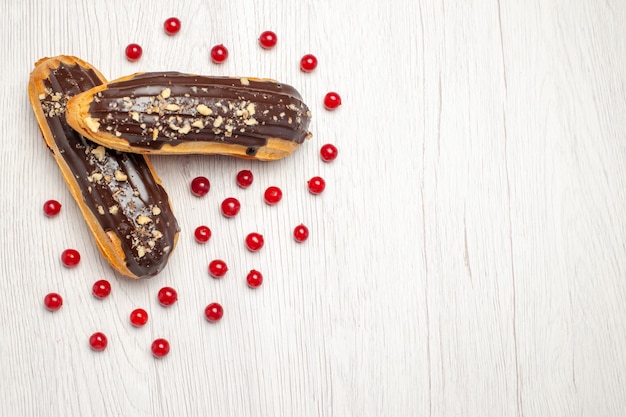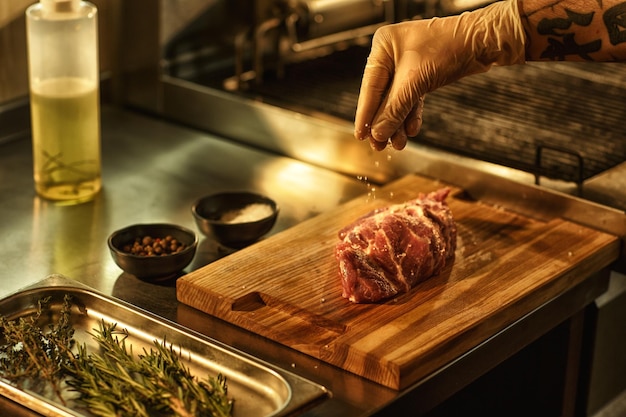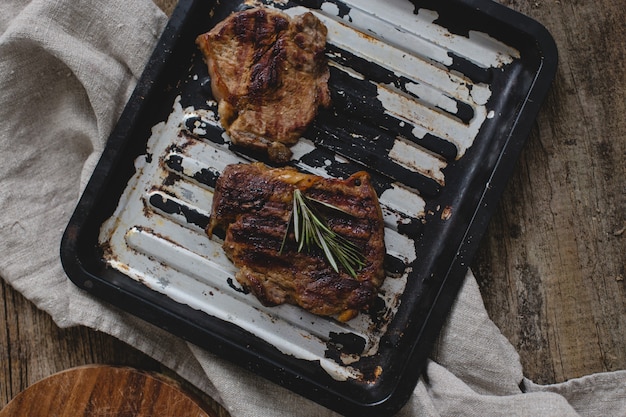Ah, the anticipation of a special meal, the aroma of roasted meat filling the kitchen, the promise of juicy, tender cuts of beef... all brought to life by a glorious bone-in rib roast. It’s a culinary masterpiece, and I’m here to be your guide, sharing my experiences and tips to help you create the perfect, mouthwatering result every time.
We'll cover everything from choosing the right cut of meat and understanding cooking times to the secrets of achieving that perfect level of doneness. We’ll explore searing, slow roasting, and even delve into the finer points of keeping things simple and stress-free. Get ready to impress your guests (and yourself!) with this delightful culinary adventure.
(Part 1) The Roast: Choosing Your Perfect Cut

You can't achieve a truly satisfying rib roast without selecting the right cut of beef. You need something that will hold up well to the cooking process, offer juicy, flavourful meat, and provide that incredible depth of flavour that makes rib roast so special.
The Classic: prime rib
This is the king of the rib roast world, and for good reason. It’s a cut of beef from the rib section of the animal, typically with the bone still intact, and it’s known for its marbling, which translates to juicy, flavourful meat. This means you get a tender, melt-in-your-mouth experience. But let's be real, it can be a bit pricier than other options. But honestly, sometimes you just have to treat yourself!
The budget-friendly Choice: standing rib roast
You can still achieve a magnificent roast without breaking the bank. A standing rib roast is essentially the same cut as Prime Rib, but it might come from a different grade of beef, which is why it's often more affordable. Just remember, the key is to find a roast with good marbling to ensure it's juicy. Look for roasts that are at least 2 inches thick and have a good amount of fat marbled throughout.
The Lean and Mean: ribeye roast
This cut comes from the ribeye section of the beef and is known for its buttery texture and rich flavour. It's a leaner option than Prime Rib or Standing Rib Roast, making it a good choice if you're watching your fat intake. However, it can be a bit more challenging to cook because it has less fat. I'll be honest, I prefer a bit more marbling in my roast, but if you're looking for a leaner option, the Ribeye is definitely worth considering.
When selecting your roast, I recommend asking your butcher for their recommendations. They can help you choose the right cut based on your budget and preferences.
(Part 2) Understanding Doneness

There's nothing more disappointing than a dry, overcooked roast. That's why knowing your desired level of doneness is crucial.
The internal temperature Scale: Your Guide to Perfection
Here's where a good meat thermometer becomes your best friend. It's the most reliable way to determine doneness. Always insert your thermometer into the thickest part of the roast, avoiding bones. Here's a handy guide to internal temperatures:
| Doneness | Internal Temperature (°F) | Description |
|---|---|---|
| Rare | 125-130°F | Slightly pink throughout, very juicy |
| Medium-Rare | 130-135°F | Some pink in the center, still juicy |
| Medium | 135-140°F | Slightly pink in the center, becoming slightly more firm |
| Medium-Well | 140-145°F | Very little pink in the center, firmer texture |
| Well-Done | 145°F and above | No pink, completely cooked through, but may be dry |
Visual Clues: A Quick Reference
While a thermometer is essential, visual clues can give you a general idea of doneness. Here's what to look for:
- Rare: The roast will be a deep red inside, with a slight give when pressed.
- Medium-Rare: The roast will be pink throughout, with a firm texture.
- Medium: The roast will have a slight pink center, with a firm texture.
- Medium-Well: The roast will be mostly brown, with a firm texture.
- Well-Done: The roast will be completely brown, with a very firm texture.
Remember, it's important to consider the preferences of your guests when deciding on the level of doneness. For example, if you're serving a group of people who prefer their meat well-done, you might want to cook the roast for a longer period of time. But if you're cooking for yourself and enjoy a more rare roast, you can cook it for a shorter time.
(Part 3) Preparing for Perfection: The Prep Work

The key to a delicious rib roast isn't just in the cooking, but also in the prep work. This is where you set the stage for flavour and tenderness.
The Seasoning: A Symphony of Flavours
I'm a firm believer that simple is often best. A good quality salt and pepper is all you really need. I love using coarse sea salt and freshly ground black pepper. But if you want to get fancy, feel free to add herbs like rosemary, thyme, or garlic powder. Just remember, less is more, especially when it comes to salt. You can always add more later if needed.
The Rub: A Touch of Magic
A dry rub is a great way to add flavour and a beautiful crust to your roast. It's a simple mixture of spices and herbs, and there are endless possibilities. I like to use a combination of paprika, cumin, garlic powder, onion powder, and a pinch of cayenne pepper. You can even add a bit of brown sugar for a hint of sweetness.
If you're looking for a specific flavour profile, you can find pre-made dry rubs at most grocery stores. Or get creative and make your own!
The Sear: Building a Delicious Foundation
Searing your rib roast before roasting is a game-changer. It creates a delicious, caramelized crust that adds depth of flavour and a beautiful visual appeal. This helps lock in the juices and develop a rich, flavorful crust. Simply heat a large cast iron skillet over high heat, add a few tablespoons of oil, and sear the roast on all sides until it's nicely browned. Don't worry, this doesn't have to be perfect. The goal is to create a nice crust, not to cook the roast through.
(Part 4) Roasting: The Art of slow cooking
With the prep work done, it's time for the grand finale – the roasting. This is where the magic truly happens.
The Oven: Your Partner in Crime
I always use a preheated oven for roasting, as it ensures even cooking. Start with a temperature between 450°F (232°C) and 400°F (204°C) depending on the size of the roast. A higher temperature will help create a nice crust on the outside, while a lower temperature will ensure that the roast cooks evenly throughout.
The Cooking Time: A General Guideline
You'll need to cook your roast for about 15-20 minutes per pound for a rare to medium-rare doneness, and longer for more well-done temperatures. However, it's important to note that this is just a guideline, as cooking times can vary depending on the size and shape of the roast, as well as the type of oven you're using.
The Rest: The Key to Tenderness
Once your roast is cooked to your desired internal temperature, it's crucial to let it rest for at least 15-20 minutes before carving. This allows the juices to redistribute, resulting in a more tender and juicy roast. I like to cover the roast loosely with foil to keep it warm while it rests.
(Part 5) Additional Tips and Tricks
Now, let's get into some of those little details that can make a big difference.
The Basting: Maintaining Moisture
While it's not necessary, basting your roast every 30-45 minutes can help maintain moisture. You can use melted butter, pan drippings, or even a simple wine-based glaze. Just be careful not to over-baste, as it can cause the crust to become soggy.
The Thermometer: Your Reliable Guide
Don't rely solely on the cooking time alone! It's essential to use a meat thermometer to ensure your roast is cooked to your desired doneness. This is especially important if you're cooking a large roast, as the internal temperature can vary throughout the meat.
The Temperature Drop: The Final Act
When you take your roast out of the oven, the internal temperature will continue to rise for a few minutes. So, it's best to check the temperature again after resting, and allow for a temperature drop of about 5-10 degrees.
(Part 6) Serving Up Deliciousness
The moment has finally arrived! Your rib roast is perfectly cooked, rested, and ready to be carved.
The Carving: An Art in Itself
Start by carving the roast into individual slices, cutting against the grain to ensure tenderness. This will help to prevent the meat from being tough and stringy. You can also use a chef's knife or a carving fork to hold the roast in place while you carve.
The Presentation: A Feast for the Eyes
Now is the time to let your creativity shine! You can serve the roast on a platter, with roasted vegetables, or even sliced and served on toasted bread. You can also create a beautiful presentation by arranging the slices on a bed of arugula or other greens.
(Part 7) Sides and Sauces: Completing the Feast
No rib roast is complete without a delicious array of sides and sauces.
The Sides: The Perfect Accompaniments
Roasted vegetables, mashed potatoes, or a simple green salad are all excellent choices. Roasted root vegetables, like carrots, potatoes, and parsnips, pair beautifully with the richness of the roast. You can also get creative and try something different, like risotto or a baked sweet potato casserole.
The Sauces: Adding Layers of Flavor
A good gravy, pan sauce, or even a simple horseradish sauce can take your rib roast to the next level. You can make your sauce from scratch or use a pre-made option. A pan sauce made from the drippings of the roast is a classic choice, and it's incredibly easy to make. Simply deglaze the pan with a little wine or broth, and then simmer until it reduces to a sauce consistency.
(Part 8) FAQs: Common Questions and Answers
Here are some commonly asked questions about rib roast cooking.
1. How long should I cook a 3-pound rib roast?
A 3-pound rib roast will take approximately 45-60 minutes for a rare to medium-rare doneness, and longer for more well-done temperatures. It's best to check the internal temperature using a meat thermometer to ensure it's cooked to your desired level of doneness.
2. Can I cook a rib roast in a slow cooker?
While a slow cooker is excellent for many types of meat, it's not ideal for cooking a rib roast. The slow cooker environment is too moist, and it can make the roast overly tender and fall apart.
3. How do I reheat a rib roast?
The best way to reheat a rib roast is in the oven at a low temperature, around 325°F (163°C). Wrap the roast in foil and heat it until it's warmed through. You can also reheat individual slices in the microwave, but it's not recommended for the entire roast.
4. What should I do with leftover rib roast?
There's nothing better than leftover rib roast! You can use it in sandwiches, salads, or even make a delicious hash. You can also slice it thin and use it in tacos or burritos.
5. Can I freeze a rib roast?
Yes, you can freeze a rib roast for up to 3-4 months. It's best to wrap it tightly in plastic wrap and then aluminum foil before freezing. This will help to prevent freezer burn.
Conclusion
Cooking a bone-in rib roast is a culinary adventure that will impress your guests and bring a sense of satisfaction. It's not a difficult task, but it does require some patience and attention to detail. With the right preparation, cooking techniques, and a bit of care, you'll be able to achieve delicious results every time. So gather your ingredients, fire up your oven, and get ready to enjoy the magic of a perfect bone-in rib roast!
Everyone is watching

Prime Rib Roast Cooking Time Chart: Per Pound Guide
Cooking TipsPrime rib roast. Just the name conjures images of lavish dinners, crackling fires, and hearty laughter. It’s ...

How Long to Bake Potatoes in the Oven (Perfect Every Time)
Cooking TipsBaked potatoes are a staple in my kitchen. They're incredibly versatile, delicious, and surprisingly easy to m...

Perfect Rice Every Time: The Ultimate Guide to Cooking Rice
Cooking TipsAs a self-proclaimed foodie, I've always been a bit obsessed with rice. It's the foundation of countless cuisi...

The Ultimate Guide to Cooking Asparagus: Tips, Techniques, and Recipes
Cooking TipsAsparagus. The mere mention of this spring delicacy conjures up images of vibrant green spears, crisp and burs...

Ultimate Guide to Cooking the Perfect Thanksgiving Turkey
Cooking TipsThanksgiving. Just the word conjures up images of overflowing tables laden with delicious food, the scent of r...
